

Immediate loading has now become an increasingly commonplace surgical technique with high demand in our clinics, and can provide the patient with increased comfort, aesthetics and harmony on the very same day as the implant treatment.
Introduction
Immediate loading has now become an increasingly commonplace surgical technique with high demand in our clinics, and can provide the patient with increased comfort, aesthetics and harmony on the very same day as the implant treatment. We can also manage the tissues from the very first moment with correct provisionalisation designed for us by the emergence profile required for the final restoration.
Case description
Patient aged 58 with no relevant prior medical background, visits the clinic to improve his appearance, with high treatment expectations. Atraumatic extractions of pieces 12, 11, 21, 22 and 23 due to presenting an unfavourable periodontal condition, presence of a cyst, mobility and bad position. No alveolar regeneration or preservation was carried out as he presented good integrity of the vestibular panels.
 Initial situation of the patient | Initial OPG | Pre-surgery image
Initial situation of the patient | Initial OPG | Pre-surgery image
Procedure
After a 3-month healing period, placement was planned of the Biomimetic Ocean Implants (Avinent implant System) with internal connection in positions 11, 21 and 23 plus an immediate loading of the missing teeth using the modified Pick Up technique. Positioning of the provisional dentures using the modified Pick Up technique | Placement of the Biomimetic Ocean IC implants | Verification of the three-dimensional position of the implants
Positioning of the provisional dentures using the modified Pick Up technique | Placement of the Biomimetic Ocean IC implants | Verification of the three-dimensional position of the implants Placement of the transepithelial caps
Placement of the transepithelial caps
The technique used is a modification of the one described by Dr. German Galucci, which uses a scan prosthesis and another surgical prosthesis for placement of the implants designed on the basis of the diagnostic wax-up that will then be the future provisional. The choice of this technique is due to its ease and speed provided in the moment to know the prosthetically correct position of our implants while at the same time avoiding intra-operation impressions and bite registrations when the implants are put in place having previously verified all functional and aesthetic parameters in the teeth try-in or diagnostic wax-up.
All implants remained stable with a torque of approximately 45Ncm. Straight transepithelial caps were placed of 1 mm in height (AVINENT) to provide, given that this was a rehabilitation with multiple implants, greater passivity and improved insertion of the dentures. Another advantage of these caps is that they move the dentures away from the connection of the implants, thereby achieving an improved biological sealing.
Provisional dentures
Provisional titanium caps were placed directly on the implants and a provisional ovoid denture was made of acrylic resin to guide the healing of the tissues.
 Placement of the provisional titanium caps | Close-up of the provisional dentures finished and polished
Placement of the provisional titanium caps | Close-up of the provisional dentures finished and polished Placement in the mouth of the provisional dentures within 24h | X-ray of the implants in place and provisional dentures loaded
Placement in the mouth of the provisional dentures within 24h | X-ray of the implants in place and provisional dentures loaded
Definitve dentures
Following the healing period for the tissues, and after achieving the required emergence profile, the latter was copied conventionally on the basis of the provisional dentures screwed to the master model.
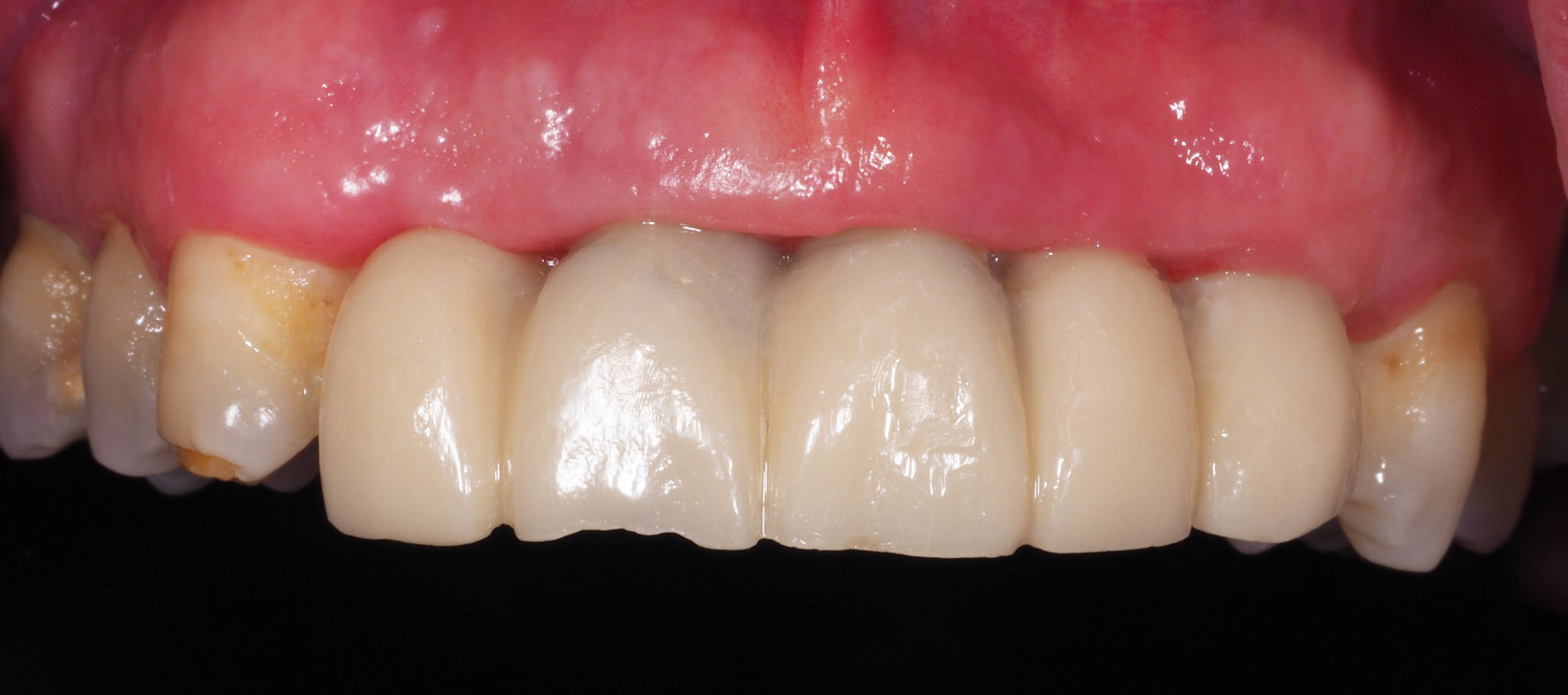 Close-up of the tissues during the healing period
Close-up of the tissues during the healing period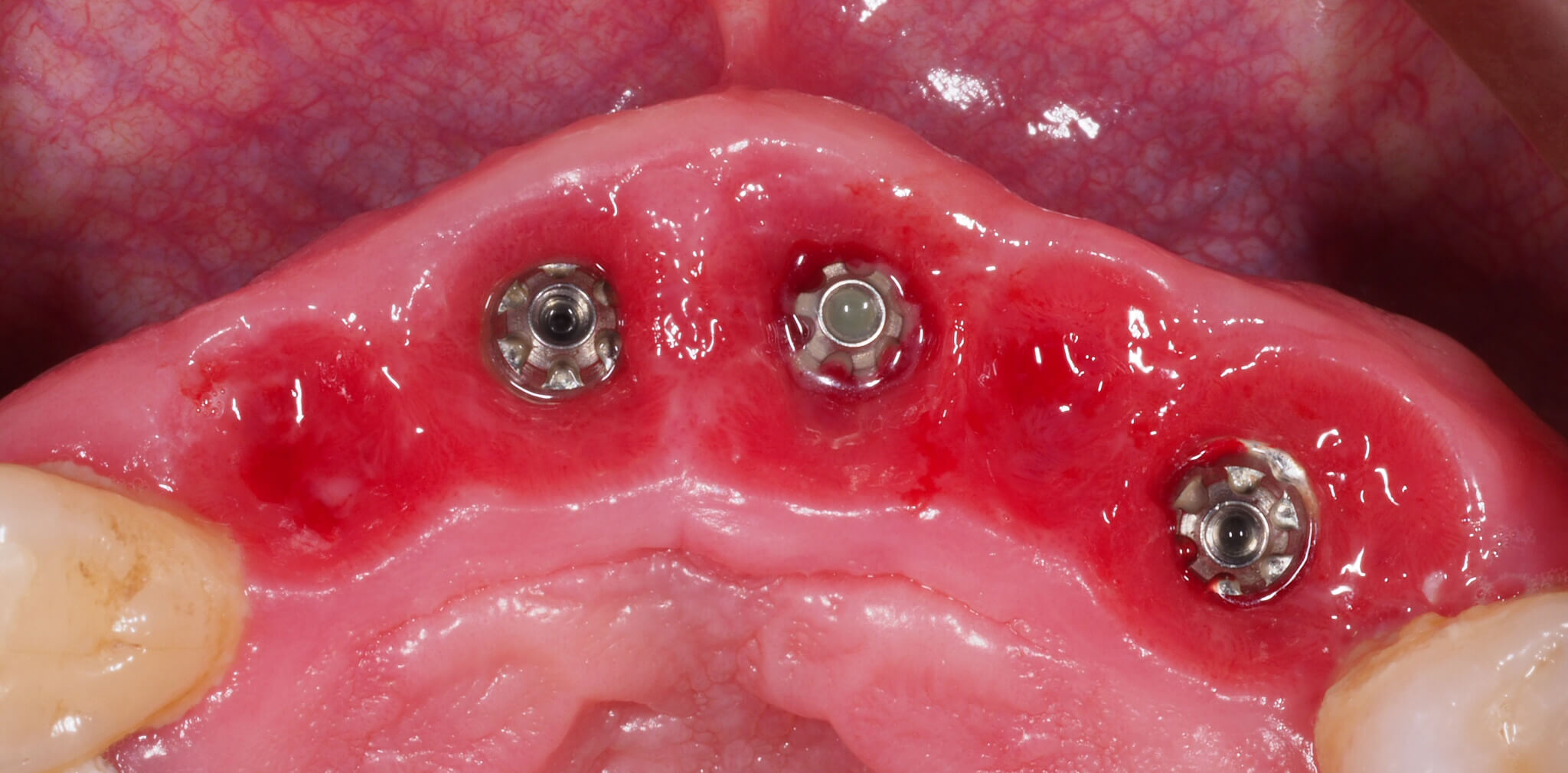 Close-up of the soft tissues
Close-up of the soft tissues
The emergence profile obtained was taken to the mouth and a new accurate impression was taken from the patient for transfer to the laboratory of all of the provisional information and preparation of the definitive metal-ceramic dentures.
 Copy of the emergence profile
Copy of the emergence profile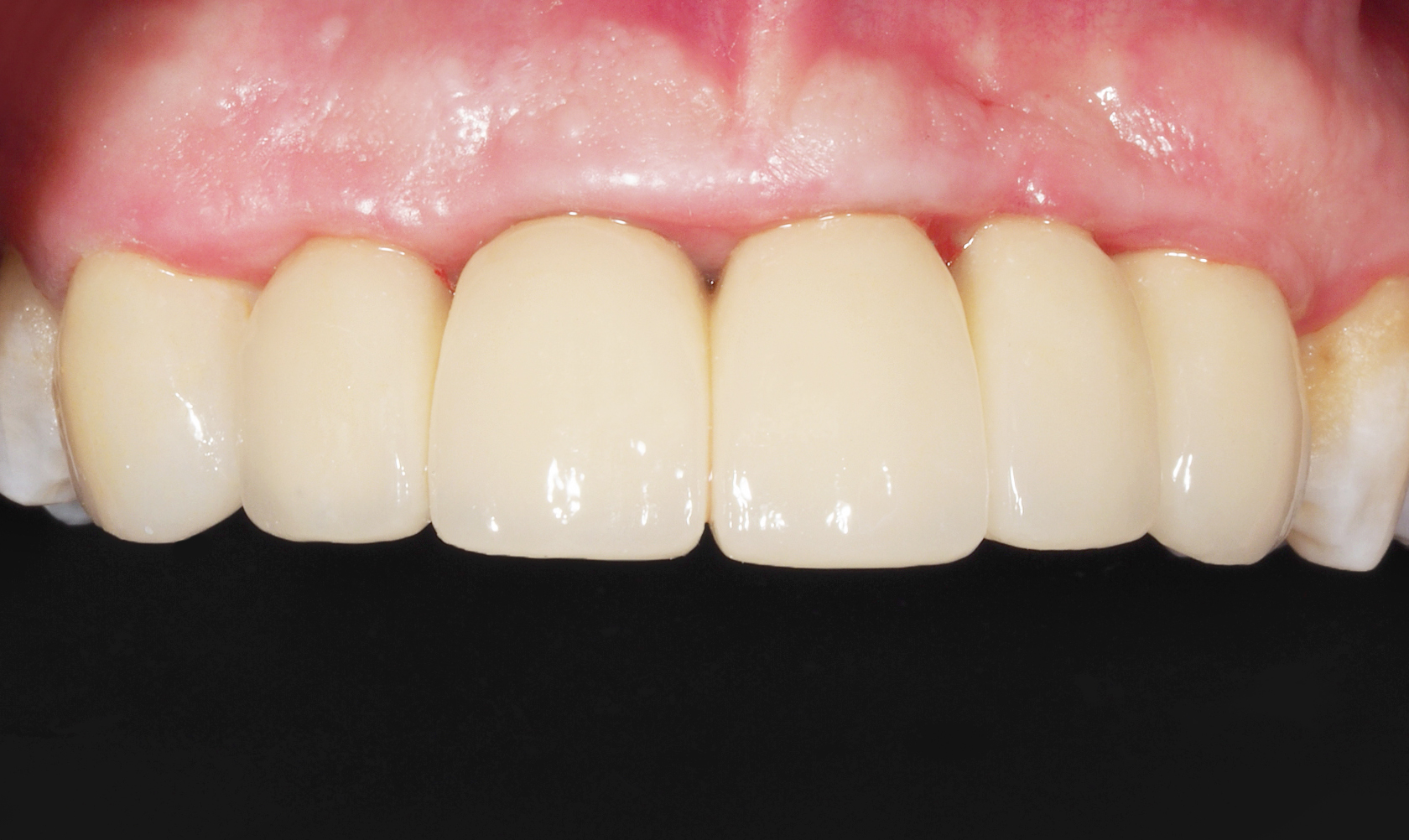 Definitive dentures in the mouth
Definitive dentures in the mouth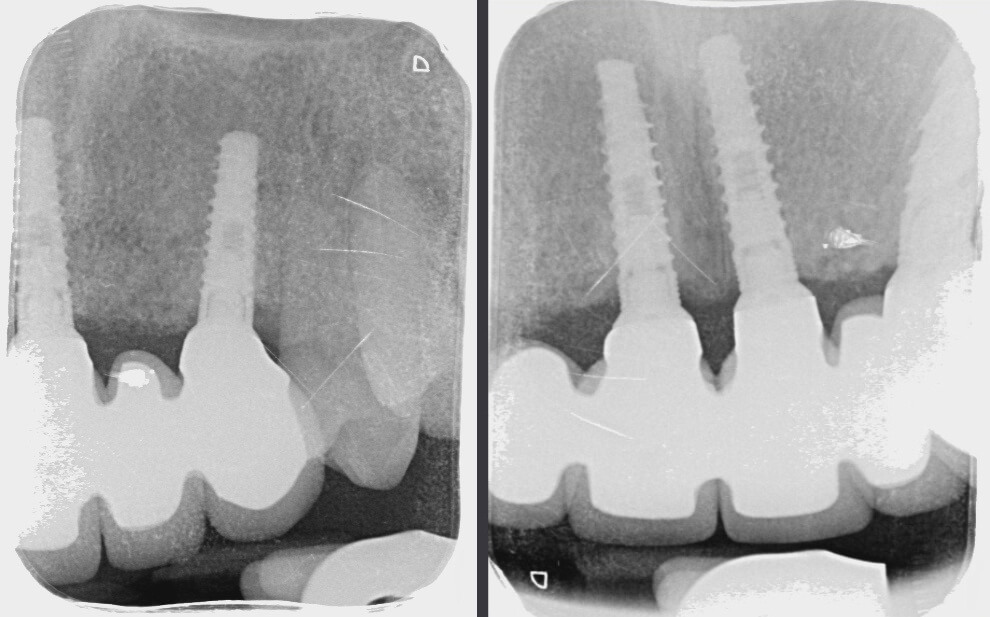 X-ray of the denture in place
X-ray of the denture in place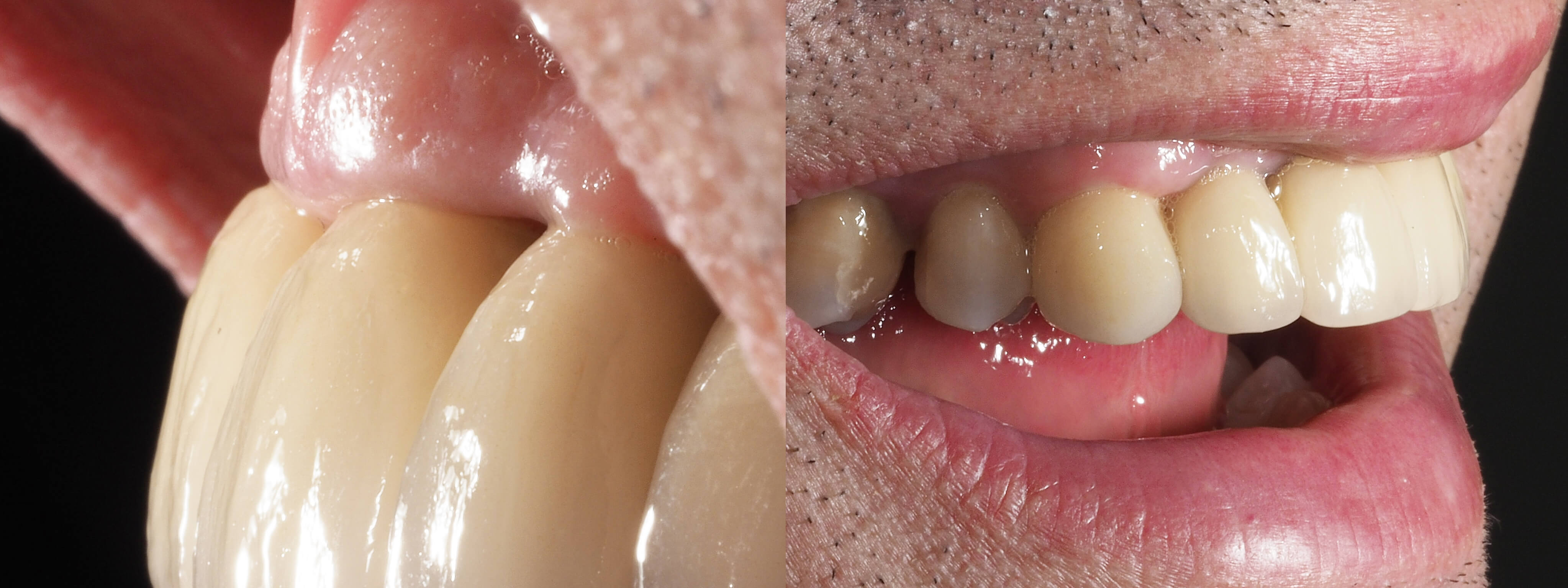 Definitive dentures in the mouth
Definitive dentures in the mouth
Conclusion
In this case, it is possible to appreciate the importance of handling the soft tissues through execution and placement of provisional dentures on the same day as the implant surgery. If carried out correctly, this will be our starting point for the definitive rehabilitation, achieving harmony in the aesthetic sector.